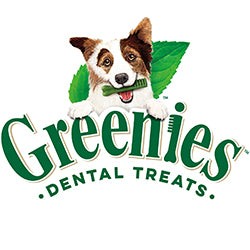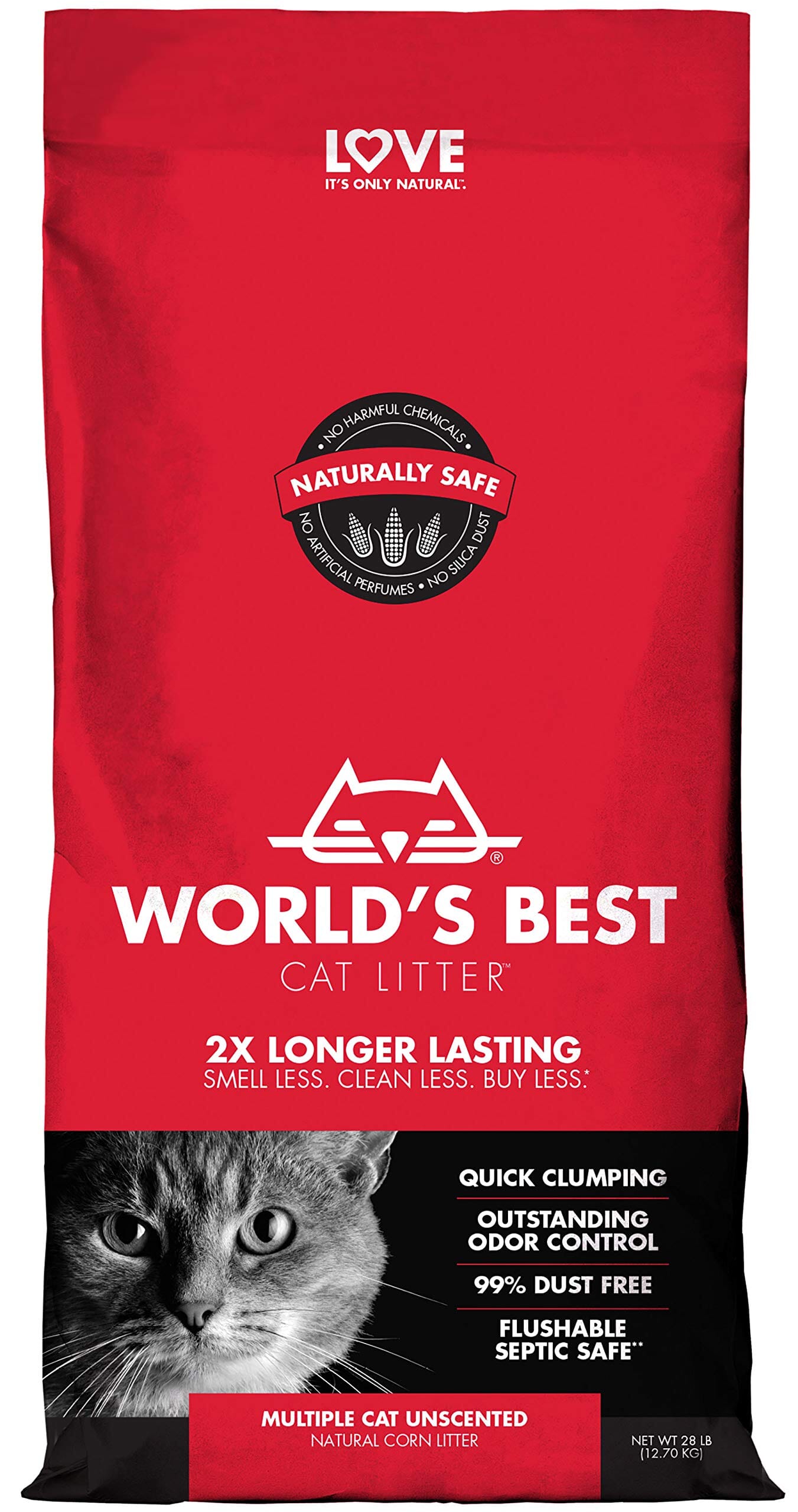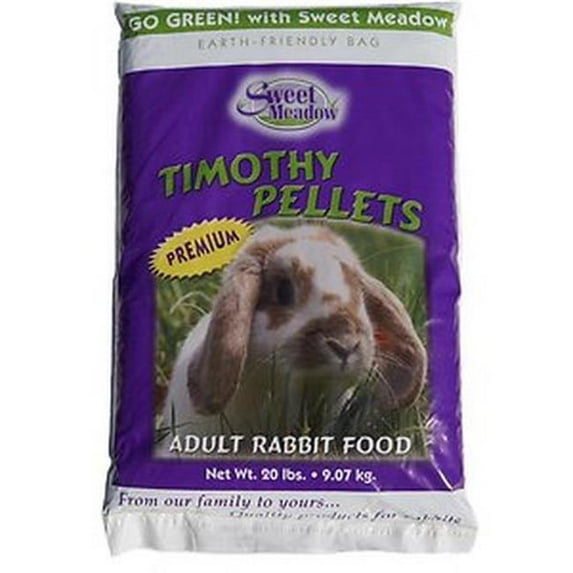Cat Litter


Purina Tidy Cats Lightweight 4-in-1 Strength Odor Control Clumping Clay Multi-Cat Litter - 17 Lbs
- Sale price
- $40.43
- Regular price
- $48.52
Naturally Fresh® New! Improved Multi-Cat Litter - 14 Lbs
- Sale price
- $17.61
- Regular price
- $21.13
Naturally Fresh® Quick-Clumping Cat Litter - 26 Lbs
- Sale price
- $39.96
- Regular price
- $47.95

Purina Tidy Cats Breeze Original Pellets Dust-Free Unscented Cat Litter - 3.5 Lbs - Case of 6
- Sale price
- $68.59
- Regular price
- $82.30
World's Best Cat Litter Original Corn Clump Unscented Cat Litter
- Sale price
- From $13.09
- Regular price
- $15.71
World's Best Cat Litter Corn Clumping Unscented Multi-Cat Litter - 28 Lbs
- Sale price
- $49.49
- Regular price
- $59.38
World's Best Cat Litter Corn Clumping Lavendar Scented Multi-Cat Litter - 28 Lbs
- Sale price
- $49.49
- Regular price
- $59.38

Arm & Hammer Naturals Double Duty Clumping Clay Cat Litter with Corn Fibers - 9 Lbs - 2 Pack
- Sale price
- $27.61
- Regular price
- $33.13
Naturally Fresh® Ultra Odor Control Multi-Cat Quick-Clumping Formula Cat Litter - 14 Lbs
- Sale price
- $18.76
- Regular price
- $22.51
Naturally Fresh® Non-Clumping Pellet Litter for Cat & All Small Animals - 10 Lbs Bag
- Sale price
- $8.99
- Regular price
- $10.79
Naturally Fresh® Non-Clumping Natural Pellet Litter for Cat and Small Animal - 26 Lbs
- Sale price
- $35.44
- Regular price
- $42.53

Naturally Fresh Harmony Calming Lavender and Bamboo Scented Walnut Shell Clumping Cat Litter
- Sale price
- From $17.61
- Regular price
- $21.13

Tidy Cats Low Dust Clumping Cat Litter Lightweight Free & Clean Unscented Multi Cat Litter
- Sale price
- $43.59
- Regular price
- $52.31
Purina Tidy Cats Free and Clean Unscented Low-Dust Clumping Clay Multi-Cat Litter - 20 Lbs - Case of 2
- Sale price
- $50.29
- Regular price
- $60.35
Swheat Scoop Original Fast Clumping Odor Neutralizing Enzymes Natural Wheat Cat Litter
- Sale price
- From $21.28
- Regular price
- $25.54
Boxiecat Air Lightweight Scented-Free Cat Litter - 6.5 lbs
- Sale price
- $22.63
- Regular price
- $27.16
Boxiecat Air Lightweight Extra Strength Pro-Formula Dust-Free Probiotic Odor Eliminator Plant Based Clumping Cat Kitty Litter - 16.5 Lbs
- Sale price
- $41.11
- Regular price
- $49.33

Swheat Scoop Multi-Cat Superior Clumping Odor Neutralizing Enzymes Natural Wheat Cat Litter
- Sale price
- From $21.91
- Regular price
- $26.29
Swheat Scoop Easy Maintenance Fast Clumping Odor Control Natural Wheat and Corn Plant-Based Cat Litter
- Sale price
- From $21.91
- Regular price
- $26.29
Fresh Step Extreme Mountain Spring Febreze Scented 10-Day Clumping Cat Litter - 42 Lbs
- Sale price
- $36.22
- Regular price
- $43.46
Feline Pine Arm & Hammer Original Non-Clumping Cat Litter - Pine - 7 Lbs - 6 Pack
- Sale price
- $44.79
- Regular price
- $53.74
Arm & Hammer Hardball Lightweight Multi-Cat Clay Clumping Cat Litter - 10.5 Lbs
- Sale price
- $30.48
- Regular price
- $36.57
Scoop Away Multi-Cat Complete Unscented Cat Litter - 20 Lbs
- Sale price
- $15.26
- Regular price
- $18.31
Wee Away Refresh Kitty Litter Rejuvenator Cat Deodorizer - 16 oz Bottle
- Sale price
- $9.03
- Regular price
- $10.84
Dr. Elsey’s® Kitten Attract™ Cat Litter - 20 Lbs
- Sale price
- $19.89
- Regular price
- $23.87
Okocat Premium Original Clumping Natural Wood Plant-Based Cat Litter
- Sale price
- From $15.22
- Regular price
- $18.26
Cat Litter:
Shopping for the right cat litter box isn’t always easy with hundreds of brands and numerous cat litter types. However, to ensure clarity, we’ll talk about the basics of cat litter before listing various types of litter boxes out there with their benefits and features.
Cat litter is a specially engineered box meant to absorb bodily fluids and clump away fecal matter that they come in contact with. Cats and kittens are easily trained to drop their feces inside a cat litter box, which varies in size depending on the size of your cat. A general rule is that the larger the litter boxes, the easier it is to train the cat as they seek comfort while doing their business. The best cat litters are housed or feature a covering of some sort.
Now, let’s get back to litter. In the early 1900s, domesticated cat owners didn’t have access to the modern technology used in present litter boxes. Most households used sand and dirt or allowed their cats to roam outside their living place to relieve themselves. However, this often caused a mess on the streets and sidewalks as there weren’t any alternatives. A cat's urine and fecal matter are known to stench bad and stain flooring or fibers that come in contact with the waste. Besides, their poo sticks to objects if not removed right away. There weren’t too many deodorizers, sprays, and stain removers back then, so only god knows what the owners used to get rid of the horrible smell. Moreover, cat ownership always remained high, so there was an increasing need to solve this issue.
Somewhere during the mid-19th century, a pioneer named Edward Lowe came up with the idea to develop a substance with clay that was an all-natural deodorizing substance; he coined the name Kitty Litter for this device. This litter box wasn't just a natural deodorizer; it came with the ability to clump their sticky fecal matter around the litter. After conducting numerous consumer testing, the device took off like wildfire, and people started adopting this litter in almost every household.
Fast forward to the 21st century, with the advancement of modern technology and innovations, there are dozens of options available in numerous substances.
Let’s take a deep dive into the significant clumping categories that exist today to find the best out there.
Clay Cat Litter or Bentonite Clay Litter
Unlike the Clay Cat Litter invented almost a hundred years ago, the present version of clay is much different with tremendous improvements and incorporates a substance called bentonite clay. Clay cat litters are often granulated, blended into a soft, powder substance. The modern bentonite clay litter uses various binding materials, such as starch, which binds feces. Besides, these litters have improved liquid-absorbing and odor removing properties.
Clay is one of the best mediums with an exceptional ability to absorb urine or liquids. The inner Sodium Bentonite substance can absorb approximately 14 times its mass in the fluid. Besides, Bentonite Kitty Litter is also known to dry relatively quickly, making them great for owners looking to limit their trips to the local pet stores.
There are numerous versions of clay litter available; some are unscented with added all-natural ingredients and mixtures, while others are available in various fragrances, such as eucalyptus and green apple. Some owners believe that granulated cat litter may pose a significant health risk, as different silica dust particles may get into the lungs and cause respiratory illnesses and infections. Moreover, cats like to scratch around and, if ingested, clay can cause numerous health ailments, resulting in bloating, gas-related issues, and long-term damage to their digestive tracts. Certain fragrant chemicals aren’t all-natural and pose added health concerns and risks.
Furthermore, clay is derived through mining, which is not beneficial to the environment. They’re also messier than other litter options with less granulation, such as corn and wood-based litter.
When shopping for Cat Litter supplies, we often suggest reading the ingredients and buying fragrance items free from harmful chemicals. Remember to do your research and read the labels on the packaging. While fragrance litter items are always made commercially available, they aren’t always great for your cat. Every litter item has pros and cons, so always weigh your options with a grain of salt.
Non-Clumping Clay Cat Litter is another safe solution for those looking to buy something that’ll last in the clay family. This form of Cat Litter has fewer chemicals and doesn’t contain bentonite that is widely used to clump around fecal matter; however, it doesn’t have the same clumping properties as your typical clay litter. While this option is relatively cheaper, you’ll have to scoop around the litter manually to cover the feces constantly.
Non-clumping clay cat litter boxes don’t absorb odors but get the job done nonetheless. Moreover, most cats and kittens enjoy this version of litter, so it’s always a great idea to test it out first.
Crystal Cat Litter
This cat litter type uses silica gel, which are tiny gel beads that absorb water. Silica Gel Beads are a combination of oxygen, water, and a chemical called silica dioxide that allows the beads to form. The mixture is then dried into tiny little crystal-like ball structures.
Crystal Cat Litter is one of the longer-lasting options as, depending on usage, they typically last from 25 to 35 days. That’s right! They don’t need frequent changing, meaning fewer trips to the pet store. These litters are available in clumping and non-clumping options with or without sodium bentonite.
Unlike granulated or dusty cat litters, this pretty kitty litter isn't messy. It poses fewer health concerns, particularly those free from bentonite, as the dust doesn’t get into the lungs. Gel cat litter is made from eco-friendly and biodegradable renewable sources. In addition, these items are lighter in weight, making them more convenient for carrying. Some manufacturers offer a mixture of clay and gel litter, among other mixtures. Such options are gentle on the paws instead of sand and granulated-type litter boxes. Moreover, they absorb higher concentrations of liquids; however, it’s good to have a scooper handy if you’re avoiding bentonite. Furthermore, the higher manufacturing costs make them a bit more expensive than other options.
We recommend against buying cat litter for kittens as, like babies, they ingest many objects, causing intestinal issues.
Tofu Cat Litter
Tofu Cat Litter is the newest, safest form of Cat Litter that is highly popular on the market. These litters are longer in shape, resembling goat or farm foods, extremely lightweight, and even safe for ingesting. A recent 21st-century invention, Tofu Litter is 100% all-natural with clumping abilities and doesn’t dig up dirt or dust. These litters are high in protein with no chemicals involved, making them utterly safe if inhaled. Besides, Tofu Litters are ideal for kittens and don’t cause intestinal or ingestion issues (still not suitable for ingesting as they are processed). It’s always wise to ensure they don’t have any chemical additives like bentonite.
Tofu litter absorbs decent liquids and naturally clumps around the fecal matter, making it more efficient than other all-natural cat litters. This cat litter is typically vacuum-packed; however, some versions of litter are slightly crushed. Besides, these items are heavier in weight, expensive, and last around two weeks or so; but, it’s the safest option out there.
This form of litter is environmentally friendly, biodegradable, and 100% safe for flushing down the toilet if you missed garbage pick-up. These litters further biodegrade in water; simply add some pieces of cat litter in water and watch it completely disappear within a minute, making them a fabulous option for those looking for the safest litter around.
While these items are safe, they don’t absorb scent all that well. Hence, it’s better to keep an all-natural deodorizer around for spraying now and then.
We recommend against buying a cat litter box if your cat is allergic or has any dietary restrictions on soy.
Corn Cat Litter
Corn-based cat litter is another excellent option for cats and kittens. This cat litter naturally clumps around the fecal matter and absorbs urine well. Besides, corn cat litter is 100% all-natural crushed and not granulated. They’re biodegradable and decompose in the earth, making them safe for the environment. For these reasons, corn-based cat litter is one of the most popular and frequently purchased litter options around.
Corn Litter is extremely lightweight and easy to dispose of; some ingredients only list corn, meaning it’s safe if ingested. Besides, the litter is crushed, ensuring it is easier on your cat’s paws when sitting or lounging on.
Corn litter clumps well naturally, thus assisting in removing odors. They’re also available in scented options and, in many cases, mixed with natural pinewood to provide a nice natural fragrance without adding any chemical fragrances. The corn itself has a raw yummy smell, so you don’t need to add any scents.
Always look to buy versions of crushed litter boxes rather than larger chunks; the smaller the ingredients, the lesser the chances of causing many intestinal issues. Besides, finely crushed cat litters are easier to flush down the toilet; speaking of flushing down the toilet, they’re well priced, so your money will be put to good use.
We recommend against buying this form of Cat Litter if your cat is allergic or has any dietary restrictions to corn.
Pine or Wood Cat Litter
Pine cat litter is always an acceptable option. This form of cat litter is crushed and less dusty than clay kitty litter. Pine cat litter is derived from lumber mills. The leftover sawdust is collected and then compressed further through machinery into tiny little pellets that are then used or recycled into cat litter; after that, they’re organized in bags and then packaged. Pine cat litter makes use of this byproduct and is 100% eco-friendly, making them a great way to save trees.
Besides, there are usually very minute amounts of leftover sawdust in each bag in minimal quantity, so they barely get into the lungs and cause any intestinal or lung problems. However, they convert back into sawdust form after contact with liquid; but that sawdust usually sticks to the urine and doesn’t disperse into the air as much as clay does. You can shop for larger wood chips without sawdust if you’re looking for a safer alternative; however, these larger cat wood chips are more rigid on the pet’s paws. Ensure that you circulate pine litter every two weeks or so, depending on the kitten or cat.
Many love the smell of fresh pine wood that helps eliminate odors from urine and fecal matter with higher absorbency levels and mediocre clumping capabilities. Some litter items are mixed with corn, while some versions feature bentonite or slightly added chemicals that help improve their ability to clump.
Pine Litter is also very light and inexpensive, making it excellent when taking out the trash. Some people can even use any leftover wood shavings if not interested in buying this cat litter; but, we recommend purchasing these cat litter options as they’re processed in a way that makes them a safer option.
Recycled Paper Litter
This cat litter box is made from recycled paper formed into pellets, making it a fantastic environment-friendly option. It is usually composed of leftover newspapers and periodicals that the local sanitation department recycles completely. This helps save the environment in ways we never knew.
Paper Cat Litter is 100% biodegradable and even safe for flushing down the toilet (similar to toilet paper). Besides, these litter options are 100% dust-free with a higher water-absorbing ability than clay, making them a healthier alternative and safe for lungs.
While the recycled paper is light and can be a bit messier, as those pellets can pop in and out of the cat litter box now and then; however, think about the footprint you’re avoiding when using recycled paper litter items. Moreover, they’re safe for cats and kittens with naturally clumping ability.
Furthermore, paper is scent-free and doesn’t offer any fragrance, meaning it’ll leave a stench. Also, paper is light and transparent, so water or liquids are likely to drop to the bottom of your cat litter box as water is heavier in weight than paper. Moreover, you’ll have to constantly scoop the bottom of the litter box every so often.
Paper litter might leave a higher dent in your wallet compared to clay, but it’s still cheaper than other options around. In addition, paper litter isn’t always so easy to find these days; however, if you’re on your way to the newsstand, try picking up a copy of the Feline Times at your local pet store.
Walnut Cat Litter
Walnut-based or plant-based cat litter is an exceptional eco-friendly solution for naturally smelling (fantastic natural-odor killing abilities) while being safe for the environment. The walnut shells are crushed in walnut cat litter, so the final product has high clumping and liquid absorbency capacities.
Walnut-based litter is excellent because it can last a long time; hence, many cat owners have started gravitating to walnut solely for that reason. Besides, these options are priced somewhere in the mid-range, making them an attractive buying option. In addition, similar to corn-based litter, walnut-based litter is biodegradable and compostable. While these litter options have minimal dust, they’re sharper in texture, so some cats might find them uncomfortable.
When buying these litter items, pay close attention to the labels, as some walnut-based cat litters contain wheat. Hence, if your cat is allergic to gluten, it’s best to avoid this litter option. Apart from that, walnut cat litter is pretty safe while being flushable.
Consider coconut cat litter if you’re looking for something similar to walnut cat litter. These litter items offer the same benefits as walnut and corn-based cat litter; however, the only difference is it’s made of crushed coconut shells, making them a bit expensive.
Besides, coconut is scarcer than walnut or corn, so these litter options aren’t widespread. Nonetheless, they’re considered one of the safest cat litter boxes available today. While they aren’t great for flushing, they’re light in weight and can last well over a month depending on the usage, placing these litter options with some of the top ones in terms of safety.
Grass Cat Litter
You might want to stop here and think for a minute, how does that even work? Well, grass litter isn’t made of actual grass but rather from grass seeds. Grass cat litters are among the top cat litters made commercially available today. They are prevalent among cat enthusiasts as the grass is 100% natural. In addition, these cat litters contain tiny seeds, about the size in-between sesame and poppy seed, that stick to just about anything, thus offering one of the best all-natural clumping properties around. Besides, there’s no powdery or dusty substance involved, making them safe if ingested.
Most cats prefer grass over the sand as it offers a lovely feel to your cat’s paws, similar to a massage. They are one of the lightest cat litters available on the market and have a silky texture. Besides, they are eco-friendly and easy to scoop; but, don’t flush these tiny seeds down the toilet; they’re seeds, hello.
Furthermore, these cat litter boxes are firm in texture, lasting for over a month. However, they’re so-so on their ability to absorb (so-so doesn’t mean bad by any means).
A major con of grass seed cat litter is the expensive cost. You’d think, how on earth is that possible when the grass is available everywhere we look? The problem is that grass is harder to harvest through processing methods than other synthetic or easier to harvest plant-based cat litters, such as walnuts, coconuts, and even clay substances. Hence, the manufacturing process renders these litter boxes heavier on the wallet. Another downside is they’re not so great at controlling odor and need frequent scooping. Besides, avoid this box if your cat is allergic to grass.
However, some might even argue that grass seed litter boxes are the best cat litter types around for the above reasons.
The Best Tip You Ever Read
If you’re in the process of training your cat to alleviate themselves in a relaxing manner and help promote their ability to release their bowels more easily, try sprinkling in some catnip inside their litter box. It’s a great way to relax their bowels.
Overall
There are numerous kinds of cat litters made commercially available. Whatever you buy, it’s crucial to visit your local vet to ensure your cat isn’t allergic to wheat, corn, soy, among other foods, chemicals, and dust particles that can be ingested or enter your feline’s lungs. Moreover, it’s crucial to dissert between the various types of cat litter boxes with pellets that are bad for ingestion, particularly for kittens who constantly lick their paws. Most litter particles can stick to their paws or feet, so always buy cautiously.
Side Note
In addition to the litters mentioned, many contain baking soda, including those produced with the name Arm and Hammer. This chemical is used for cooking and cleaning. Besides, baking soda is a great odor eliminator, making it ideal for those looking for unscented cat litters. However, there isn’t enough research to understand if baking soda is healthy for cats or kittens. It’s still a chemical, so be cautious with anything you shop for and always do your research.
Our Top Pick (not an easy decision to make)
Tofu Cat Litter: it’s the best out there for numerous reasons, including environment-friendly, biodegradable, good clumping ability, lightweight, and decent water-absorbing ability while being safe if ingested. It’s one of the world’s best cat litter boxes out there regardless of price.
Try our tofu cat litter box to test it out and see for yourself.
People Often Ask:
The answer varies depending on the number of cats you own. For a single cat with one litterbox, clean it two to three times a week. If you own multiple cats, it’s recommended to scoop them every alternate day.
Training should start at a young age, preferably when your feline is around three to four weeks old. Ensure you purchase some pretty kitty litter boxes that are easily accessible and offer privacy. Besides, let them sniff the litter box and avoid changing its position, as this might confuse your pet.
Always reward your feline friends whenever they use the litter box to encourage them.
Depending on the number of felines you own, you’ll need one litter box per cat plus one extra. For example, if you own one cat, you’ll need two boxes; for two cats, three boxes, and so on. The same rule implies if your cat lives in a house with multiple floors.
No! Never relocate the litter box and cat litter box supplies unless absolutely necessary. Cats are highly sensitive to environmental changes, so changing the position can disrupt your pet’s potty patterns.
However, if you still need to relocate the litter box, consider buying a new one and placing it in the new location. Allow your cat to explore the new box and get accustomed to it. Remove the original one once your cat starts responding positively to the new box.


































